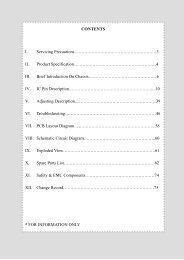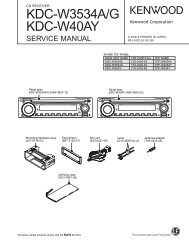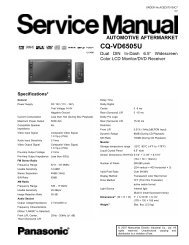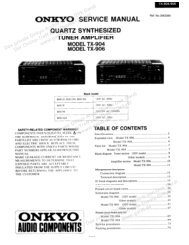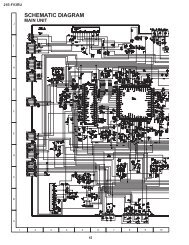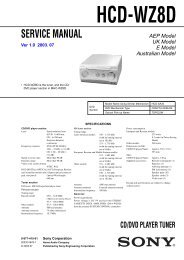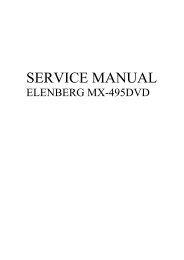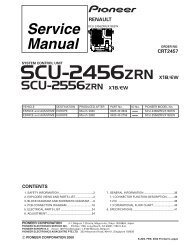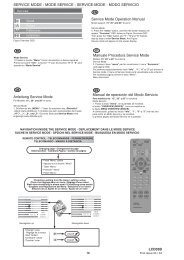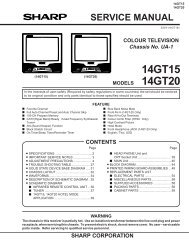Technology of Q 2500 colour TV set
Technology of Q 2500 colour TV set
Technology of Q 2500 colour TV set
You also want an ePaper? Increase the reach of your titles
YUMPU automatically turns print PDFs into web optimized ePapers that Google loves.
<strong>Technology</strong> <strong>of</strong> Q <strong>2500</strong> <strong>colour</strong> <strong>TV</strong> <strong>set</strong>For AA and BB display, delay lines must ensurethat the lines <strong>of</strong> the 1st and 2nd, and 3rdand 4th fields contain the same picture informationwhen superimposed on one another.This mode <strong>of</strong> display allows for very effectivereduction <strong>of</strong> large-area flicker. A reduction <strong>of</strong>interline flicker is, however, not possible, becauseintermediate lines are only traced after20ms.Memory 1Memory 1retardedMemory 2Output10 10 1010 10 910 8 810 10 9x x xx x xx x xx x x1.1.4 Mode ABABThis mode, together with the two describedbelow, are only possible in conjunction with asecond single-frame picture memory because<strong>of</strong> the alternating display <strong>of</strong> A and B. The deflectionmust also operate in ‘abab’ rasterform. In this display mode, the signals are notmodified during deflection or image processingoperations. In this case, both interlineflicker and large area-flicker can be reduced.However, jerking effects in moving imagescan arise. This form <strong>of</strong> display is only suitablefor signals where an image is formed from tw<strong>of</strong>ields between which there is no relativemovement. This mode is therefore <strong>of</strong> interestonly for “Photo CD” or cinema scope films inPALplus.signal delayed by one single-frame are comparedwith one another. If deviations are de-Interpolation exampletected in one <strong>of</strong> the signals, this signal is eliminatedand the values that agree in the othertwo signals are retained. If all three signalsvary, an average is formed.The deflection proceeds as sweep ‘abab’. Thecalculated A’ and B’ are written to shiftedscanning system <strong>of</strong> the 2 nd and 3 rd singleframes. A and B are written to the non-shiftedsystem <strong>of</strong> frames 1 and 4.This mode is suitable for the display <strong>of</strong> horizontalmotion between frames. Only smalljerking effects arise between movements.The mode is used to suppress interline flickerin normal <strong>TV</strong> operation.1.1.6 Mode AA*BB*Reduction <strong>of</strong> interline flicker withoutmovement interpolation (DLC)Memory 1Memory 1 Memory 2retarded1.1.5 Mode AA’B’BOutputDeflectionScanningpatternA A v B A aA A v A A' bB B v A B' aB B v B B bA A v B A aIn this display mode two single-frame pictures,A’ and B’, are calculated. By using an interpolationfilter the current single-frame, the currentsingle-frame delayed by one line and theIn this display mode with respect to the calculatedframes A* and B*, the movement betweenthe original frames A and B, and betweenB and the next A are taken into account.This movement interpolation (DMI –Digital Motion Interpolation) takes into accountboth horizontal and vertical movements whichcover several lines. This means that whensuppressing interline flicker, continuousmovement over all frames is achieved.For full frame pictures (films) it is also assuredthat no movement between two single-framepictures takes place (DMM – Digital MovieMode).In this display mode the deflection is also‘abab’.Document Q <strong>2500</strong> 9 © Loewe ProCollege



